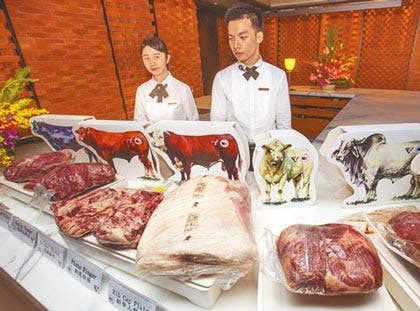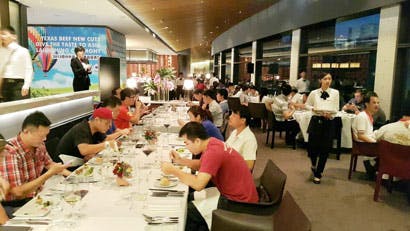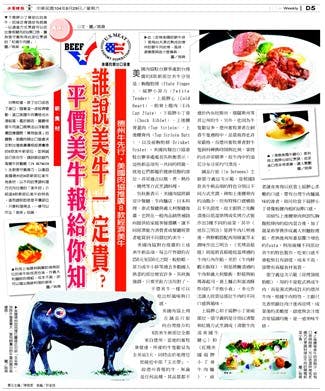Eight Alternative Cuts of U.S. Beef Promoted to Taiwanese HRI, Retail Sectors

The eight U.S. beef cuts used in the demonstration were displayed for retail and foodservice operators looking for consistently high quality and value
USMEF recently teamed with a major hotel in Taiwan to develop and promote dishes using underutilized cuts of U.S. beef, providing the region’s importers, restaurant professionals and retailers with alternative menu items and attracting attention from Asian media outlets. Funding support for the cooking demonstration and tasting was provided by the Texas Beef Council.
Preparation and cooking demonstrations at the Eslite Hotel in Taipei, which featured eight different beef cuts, were aimed at providing affordable options at a time of pricing uncertainty.
“USMEF continues to introduce items attractive to the budget-minded buyer, but which still offer high quality,” said Davis Wu, USMEF-Taiwan director. “Our goal is to meet the demand from food vendors at all levels, from street food to the high-end steakhouses. “
Cuts promoted at the Eslite Hotel were plate finger, petite tender, clod heart, rib cap plate, chuck riblet, top sirloin cap, top sirloin butt and brisket oyster.
USMEF worked with Louis Chang, executive chef of Eslite’s In-Between restaurant, to conduct the demonstration. Chang pointed out a common feature of the eight selected cuts: they are fabricated from end cuts of cattle and perfectly fit for stewing, roasting and stir-frying. Chang customized every dish with each cut, finding its best application.

Importers, hotel and restaurant leaders and retail operators taste U.S. beef dishes during the event
“Eslite Hotel is very creative in building its menu and dedicated to the development of new dishes and new ideas,” said Chang. “Eslite is trying to be a leader in the hotel business. We value high-quality food ingredients from all over the world, and U.S. beef always comes first. The eight U.S. beef cuts we selected for this demonstration are health-oriented and lean, all of them meet the requirement of less oil, less salty dining trends.”
Major newspapers, including the Commercial Times, China Times, United Daily and China Post reported on the Eslite event.
Wu noted that promoting economical cuts of U.S. beef is important at this time because of the recent depreciation of the Taiwanese dollar against the U.S. dollar.
“U.S. beef products are deeply loved by Taiwanese consumers, whether at food vendors, cafes, restaurants, or five-star hotels,” he said. “But foodservice operators are unable to charge the prices to cope with constantly rising food costs.”

Newspapers in the region ran features on the U.S. beef promotion at the Eslite Hotel in Taipei
Through July of this year, U.S. beef exports to Taiwan jumped 5 percent in volume and 13 percent in value compared to the same period in 2014, reaching 20,387 metric tons valued at $183.3 million. This makes Taiwan the seventh-largest destination for U.S. beef exports in terms of both volume and value.
Joel Haggard, USMEF senior vice president for the Asia Pacific region, said issues that challenged U.S. exports to Taiwan earlier in the year – including the West Coast labor impasse and a buildup of inventories in neighboring Asian markets – have subsided, and July exports were the largest since U.S. beef first regained post-BSE access in 2005.
